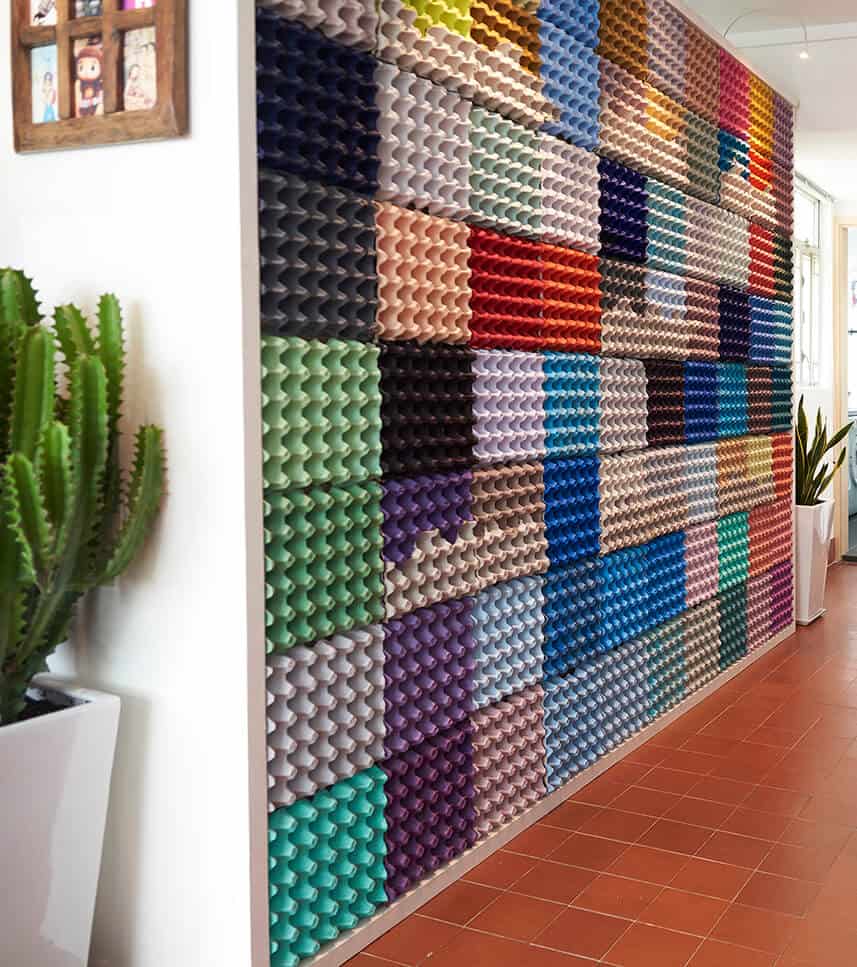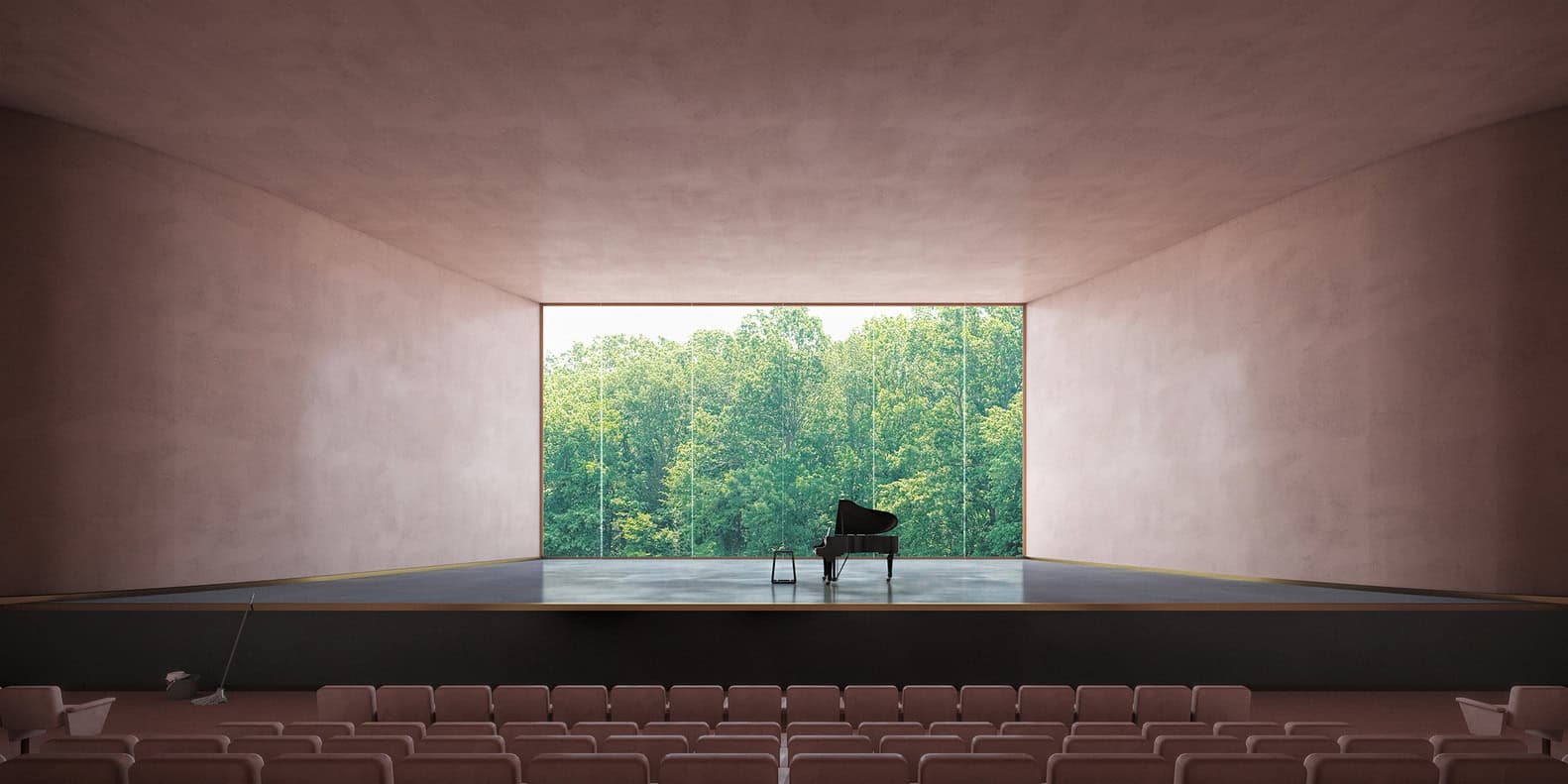Some bloggers begin mapping out their posts by searching for images that align with or enhance the topics they’re writing about. So imagine this writer’s “surprise” when Google failed to deliver the perfect photo to share with you here. Could it be that no one has ever taken a picture of the DIY soundproofing project that entails nailing mattresses to walls? And while carpeting walls may or may not constitute an aesthetic felony, it definitely fails as a soundproofing measure. But hey, we do have visual representation of that particular myth.

When failed soundproofing makes you see red
Myths about sound control and acoustics in general abound, replete with a colourful history. In his book Architectural Acoustics, Christopher N. Brooks cites two major categories of acoustical myths: wishful thinking about noise control, and charming myths about concert halls. Examples of the latter include the popular belief that “Broken wine bottles under the stage are the secret to the great acoustics in old European halls.”
Whether you’re an audiophile or an architect, read on to learn more about what to unlearn when it comes to the following misguided approaches to manipulating sound.
Carpet or mattresses applied to walls
While rugs do help absorb noise, they have no soundproofing value, and anyway, who wants to vacuum walls? As for mattresses, well, unless you want to bounce off them, be aware that you’d have to cover entire walls as well as caulk and seal every crevice between them before they’d have any soundproofing qualities at all. Other issues, such as smells and bedbugs, will remain—for the breadth of this article—unaddressed.

Could it be that no one has ever taken a picture of the DIY soundproofing project that entails nailing mattresses to walls?
Egg cartons as soundproofing material
This one might bring to the mind’s eye a music-loving, budget-constrained young adult in their first apartment. Similar to acoustic foam in shape, egg cartons could be used to break up flat wall surfaces, and thereby help absorb sound rather than bouncing it back to the listener. The cartons would somewhat reduce echo, but then, so would curtains, furniture, and anything else in the room. But their soundproofing efficacy is nil.

It may be art, but it ain’t science.
Soundproof foam
For starters, this myth is based on a common misnomer. When people talk about soundproof foam, what they’re really referring to is acoustic foam, which can be an effective product … but not a soundproofing one.
If you’ve ever shopped for a raincoat, you’ll have seen labels reading waterproof or water-resistant. But water-absorbent? Good quality in a kitchen sponge, not so much in rain gear. Similarly, soundproof ± sound absorbent. Sound absorbent materials, such as acoustic foam, prevent sound waves from bouncing and echoing within a space by obstructing their paths. Lightweight, porous materials make sense.
Actual soundproofing, however, is a matter of blocking sound, and that requires heavy, dense and thick materials best applied in multi-layered assemblies so that sound won’t penetrate or pass through. Soundproofing a wall necessitates modification of the wall itself.
Soundproof paint
At a thickness of 30 to 40 thousandths of an inch, this specialty paint may absorb some mid-range sound waves but fails to do so with lower or higher ends of the sound spectrum. Coupled with a very limited colour selection, this negligible result suggests your acoustic optimizing dollars would be better spent elsewhere.
Soundproof wallpaper
Essentially wallpaper backed with foam or similar sound deadening material, like soundproof paint, it’s too thin to do much of anything aside from reduce room-to-room residential noise transmission.
Dark paint
Quite honestly, I’ve only chosen to include this one because significant numbers of people out there actually believe it to be true. A dark room may look quieter, but tell that to your ears.
Cellulose Insulation
Its thermal value notwithstanding, cellulose insulation stuffed into your walls might as well be the dollars it cost. If you notice a theme emerging here, well, thanks for the attentive read. While fluffy, lightweight materials may absorb some sound, they can’t replace the dense, heavy materials that actually work such as, say, an extra sheet of drywall. At 2.31 pounds per square foot, a 5/8” thick sheet is effective both in terms of cost and function.
Foam Rubber
Great in the form of yoga mats, sure, but we give it a resounding “No!” for use as a soundproofing material. It degrades over time, and have we mentioned that it’s extremely flammable?
So what does work?
If you’re starting to think that the very concept of soundproofing is a myth unto itself, you’re not altogether wrong. No space is 100% soundproof. Professional recording studios come close, but most rooms don’t require that level of sound control.
Bearing this in mind, and armed with an understanding that many “simple tricks” really are myths, consider the following options that actually can help mitigate the impact of noise:
- Earbuds. Affordable and close as your nearest hardware store or pharmacy, these little units prove remarkably effective in keeping noise out of the inner space between your ears. Almost all ear plugs come with a Noise Reduction Rating, or NRR, that indicates how much sound the plugs muffle.
- White noise machines. These devices essentially drown out noise by distracting you with pleasant or innocuous sounds such as rushing waterfalls or wind blowing through trees, and many people swear by them as effective sleep aids.
- Acoustic door and window seal kits. If replacing your doors or windows with heavier alternatives isn’t feasible, check out How to Soundproof Your Apartment to learn about how such products might help.
At BAP Acoustics, we feel that myths belong to the worlds of art and literature, not sneaking around under the guise of scientific fact. And we quite enjoy dispelling them! So if a supposed solution to your acoustical problems seems too good to be true, well, chances are … Please feel free to contact us with any sound-related questions you may have or issues to clarify.




